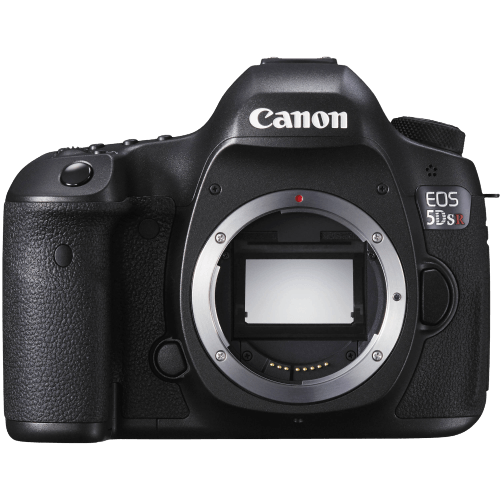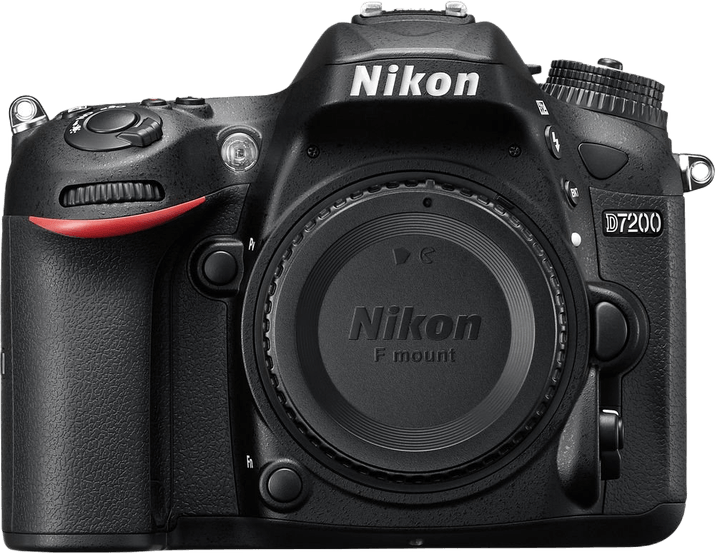Canon EOS 5DS R vs Nikon D7200 Comparison
Canon EOS 5DS R

Nikon D7200

The Canon EOS 5DS R and the Nikon D7200 both scored 68/100, making them equal in our evaluation. These DSLR cameras, released in 2015, share some common specifications. Both have a similar camera size, with the Canon measuring 152 x 116 x 76mm and the Nikon at 136 x 107 x 76mm. However, the Canon is slightly heavier at 930g, compared to the Nikon’s 765g.
The Canon EOS 5DS R stands out with its higher launch price of $3900, which could suggest better features or performance. On the other hand, the Nikon D7200’s lower launch price of $1200 makes it a more budget-friendly option without sacrificing quality.
Considering these points, both cameras prove to be strong contenders in the DSLR market. Choosing between them may ultimately depend on your specific needs and budget.
Canon EOS 5DS R vs Nikon D7200 Overview and Optics
The Canon EOS 5DS R wins our optics comparison with a score of 73/100, while the Nikon D7200 follows closely with a score of 71/100. Both cameras share certain specifications, such as a CMOS sensor, lack of image stabilization, and a similar shooting speed (5 fps for the Canon and 6 fps for the Nikon).
The Canon EOS 5DS R outperforms the Nikon D7200 in terms of megapixels, boasting a 50.6-megapixel count compared to the Nikon’s 24.2 megapixels. This difference allows the Canon to capture more intricate details and produce higher-resolution images. Additionally, the Canon EOS 5DS R features a full-frame sensor, which provides a larger surface area for light capture and contributes to better overall image quality. The camera also uses a dual Digic 6 processor, resulting in faster and more efficient image processing.
On the other hand, the Nikon D7200 holds a slight advantage in the DXOMARK sensor score, earning an 87 compared to the Canon’s 86. This means that the Nikon’s sensor performs marginally better in certain aspects, such as dynamic range and color depth. The Nikon D7200 also has a faster shooting speed of 6 fps, which could be beneficial for capturing fast-moving subjects.
Both cameras have their respective strengths and weaknesses in the optics department. The Canon EOS 5DS R excels in image resolution and sensor size, making it an ideal choice for photographers who prioritize detail and image quality. The Nikon D7200, while slightly lower in overall optics score, offers a competitive sensor performance and a faster shooting speed. Ultimately, the choice between these two cameras depends on individual preferences and the specific needs of each photographer.
Canon EOS 5DS R vs Nikon D7200 Video Performance
The Nikon D7200 outperforms the Canon EOS 5DS R in video capabilities with a video score of 70/100, while the Canon EOS 5DS R scores 57/100. Both cameras offer Full HD video resolution, with maximum video dimensions of 1920 x 1080, and built-in time-lapse functionality.
The Nikon D7200 surpasses the Canon EOS 5DS R in video frame rate, offering a maximum of 60fps compared to the Canon’s 30fps. This higher frame rate enables smoother and more detailed video recording, particularly in fast-paced scenes or action shots. The Nikon D7200’s superior video capabilities make it a more suitable choice for users focused on capturing high-quality videos.
While the Canon EOS 5DS R has a lower video score, it still provides decent video quality with Full HD resolution and 30fps. The built-in time-lapse functionality is a useful feature shared by both cameras. However, its lower video frame rate makes it less versatile than the Nikon D7200 for capturing fast-moving subjects or creating slow-motion effects.
Considering the video capabilities of both cameras, the Nikon D7200 holds a clear advantage with its higher video frame rate, resulting in more detailed and smoother footage. The Canon EOS 5DS R is a competent camera for video recording but falls short of the Nikon D7200’s performance. Users prioritizing video quality should opt for the Nikon D7200, while those satisfied with moderate video capabilities may still find the Canon EOS 5DS R suitable for their needs.
Canon EOS 5DS R vs Nikon D7200 Features and Benefits
The Canon EOS 5DS R and the Nikon D7200 both have a feature score of 59 out of 100. They share several specifications, making them comparable in terms of features.
Both cameras have a 3.2-inch screen size and lack touchscreen capabilities and flip screens. They also do not have GPS or Bluetooth. Despite these similarities, there are differences that make each camera stand out.
The Canon EOS 5DS R excels with its screen resolution of 1,040,000 dots, providing a clear and detailed display for users. However, the Nikon D7200 surpasses the Canon EOS 5DS R with a screen resolution of 1,228,800 dots, offering a sharper and more vivid display.
The Nikon D7200 has an advantage over the Canon EOS 5DS R with its Wi-Fi capability. This feature allows users to transfer photos and videos wirelessly, control the camera remotely, and share images on social media platforms more easily. The Canon EOS 5DS R does not have Wi-Fi, which may be a disadvantage for some users.
While both cameras have a similar feature score and share multiple specifications, each has its strengths. The Canon EOS 5DS R provides a clear display, but the Nikon D7200 offers a higher screen resolution and Wi-Fi functionality. These differences may influence a user’s decision when choosing between the two cameras.
Canon EOS 5DS R vs Nikon D7200 Storage and Battery
The Nikon D7200 outperforms the Canon EOS 5DS R in storage and battery with a score of 79/100, while the Canon scores 65/100. Both cameras have two memory card slots and accept SD/SDHC/SDXC cards. Neither camera offers USB charging.
The Nikon D7200 has a longer battery life, providing 1110 shots per charge with its EN-EL15 battery. In contrast, the Canon EOS 5DS R’s LP-E6 battery delivers 700 shots per charge. This gives the Nikon D7200 a clear advantage in terms of battery life.
However, the Canon EOS 5DS R supports Compact Flash cards in addition to SD/SDHC/SDXC cards, which may be useful for some users. Although it has a shorter battery life, this added compatibility may appeal to photographers who prefer Compact Flash cards.
In comparing storage and battery, the Nikon D7200 is the stronger choice due to its longer battery life, while the Canon EOS 5DS R offers additional memory card compatibility.
Canon EOS 5DS R vs Nikon D7200 – Our Verdict
Are you still undecided about which camera is right for you? Have a look at these popular comparisons that feature the Canon EOS 5DS R or the Nikon D7200:

